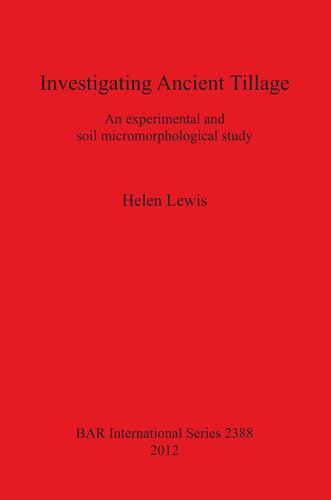

Most ebook files are in PDF format, so you can easily read them using various software such as Foxit Reader or directly on the Google Chrome browser.
Some ebook files are released by publishers in other formats such as .awz, .mobi, .epub, .fb2, etc. You may need to install specific software to read these formats on mobile/PC, such as Calibre.
Please read the tutorial at this link: https://ebookbell.com/faq
We offer FREE conversion to the popular formats you request; however, this may take some time. Therefore, right after payment, please email us, and we will try to provide the service as quickly as possible.
For some exceptional file formats or broken links (if any), please refrain from opening any disputes. Instead, email us first, and we will try to assist within a maximum of 6 hours.
EbookBell Team

5.0
88 reviewsThis volume presents a series of experimental investigations designed to explore the identification and characterisation of ancient arable farming through a feature-based morphology approach, and to assess previous work regarding the ability of soil micromorphological approaches to identify ancient tilled soils on the basis of profile and horizon characteristics. Studying ancient arable land use through soil micromorphology involves identifying remnant indicators of the processes and activities involved in cultivation in thin section. Regarding ancient tillage, there are two major types of indicators which should be examined micromorphologically: profile or horizon characteristics associated with the impact of cultivation on the soil, and the characteristics of macroscopic tillage features themselves. Much primary research has focused on the former, although the latter may prove to be both the least ambiguous, and of the most use in relating microscopic indicators to macroscopic archaeological features. This volume discusses experimental study of both of these aspects, in comparison to archaeological remains, and presents a feature morphology-based approach to the study of ancient arable land use.